A century ago, on (or about) 14 June 1924, the Belgian painter Emile Claus died. In this second article to commemorate his art, I have reached the last years of the nineteenth century, by which time light was flooding his canvases.

This is well illustrated by this dazzling view of his home river, in Spring on the Banks of the Lys from 1897, with five white geese foraging in the foreground, and Spring leaves lit by the sun.
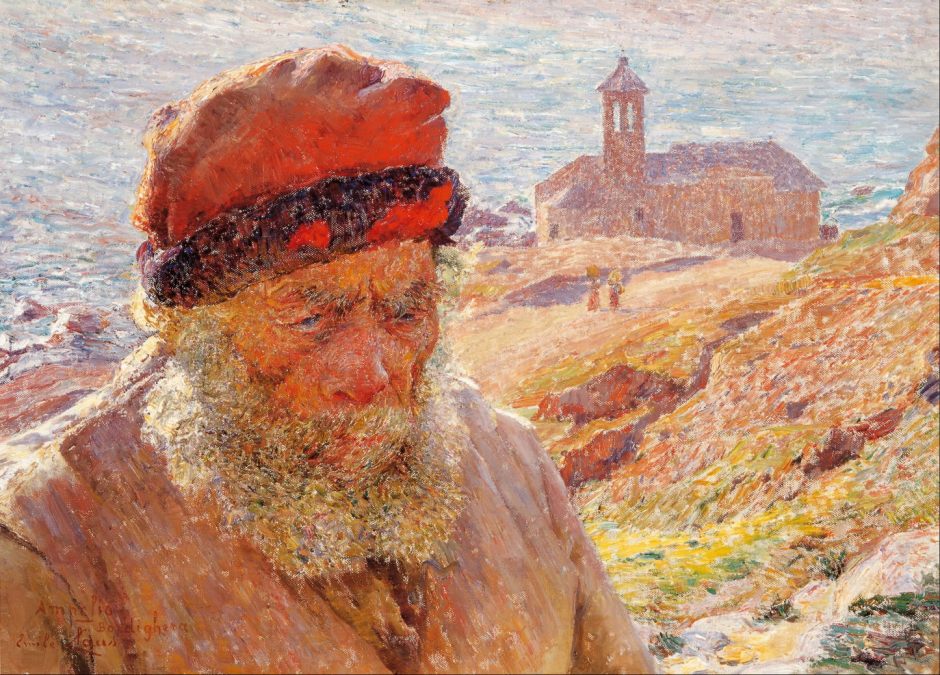
In about 1898, Claus must have visited le Midi, where he textured his brushstrokes in this portrait of Ampelio, Old Fisherman of Bordighera.

This undated painting of The Market in Front of the Theatre in Antwerp is claimed to be from the early years of the twentieth century, although its style is more typical of his work from the 1880s.
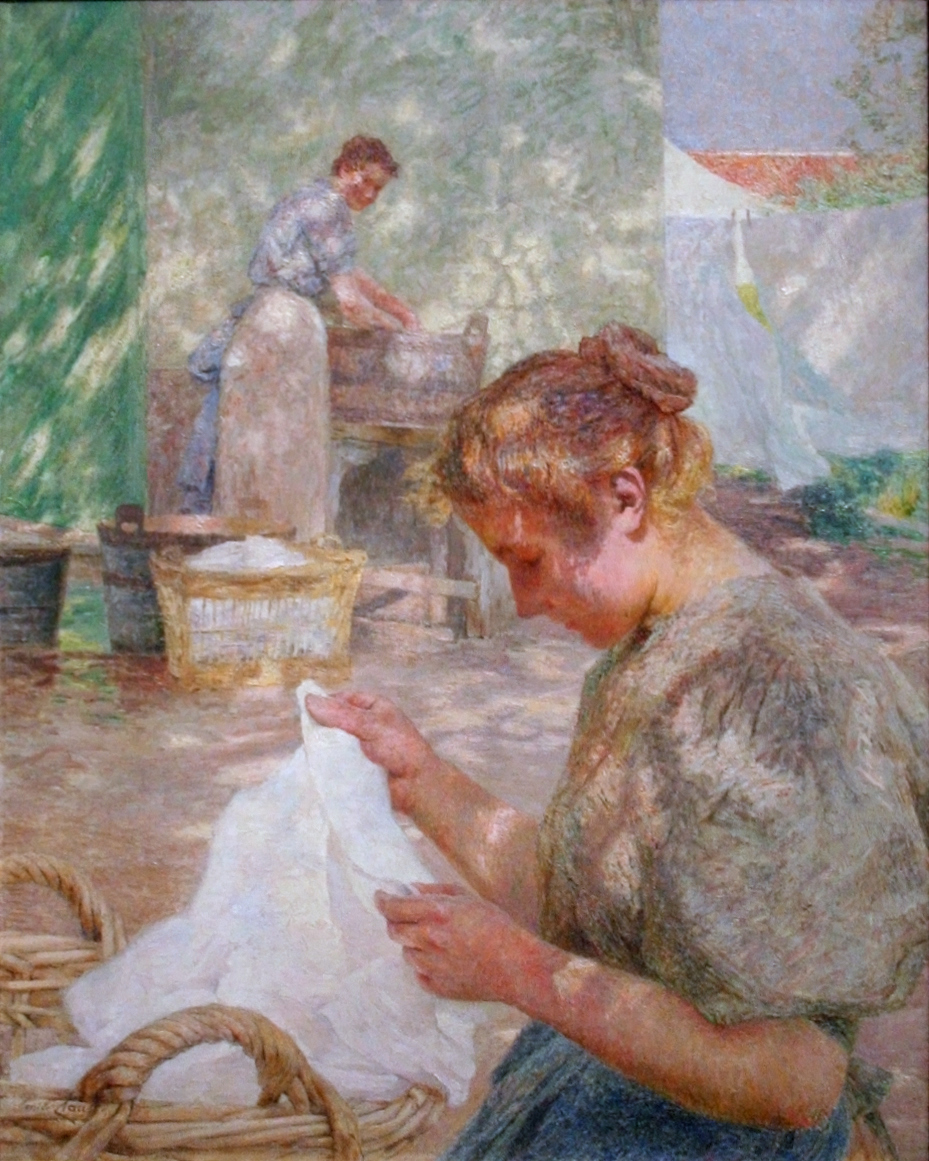
In 1901 Claus was co-founder of the Brussels Cercle Vie et Lumière, with James Ensor, Anna Boch, and others, and his light-rich style became known as Luminism. His paintings were shown throughout Europe, including at the Venice Triennial, and influential critics such as Gustave Geffroy expressed favourable opinions of them.
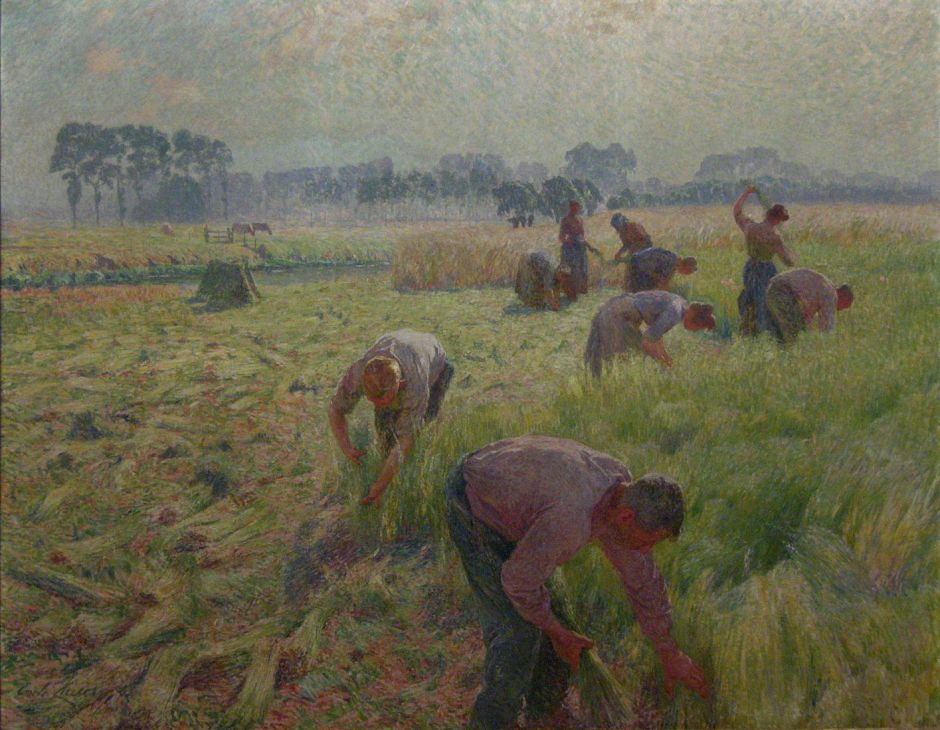
Flax is a crop of great importance to painters, as it provides the fibre used to make artist’s canvases, and linseed oil extracted from its seeds is the drying oil forming the binder in many oil paints. Claus’s Flax Harvesting from 1904 is one of relatively few paintings showing its own material origins.
Claus’s house in Belgium was named Zonneschjin (sunshine), and became frequented by young artists seeking his guidance and help. However, the outbreak of war in 1914 drove him into exile in London, where he painted post-Impressionist views of its bridges, which were strongly reminiscent of those of Monet just over a decade earlier. These are now his best-known works.
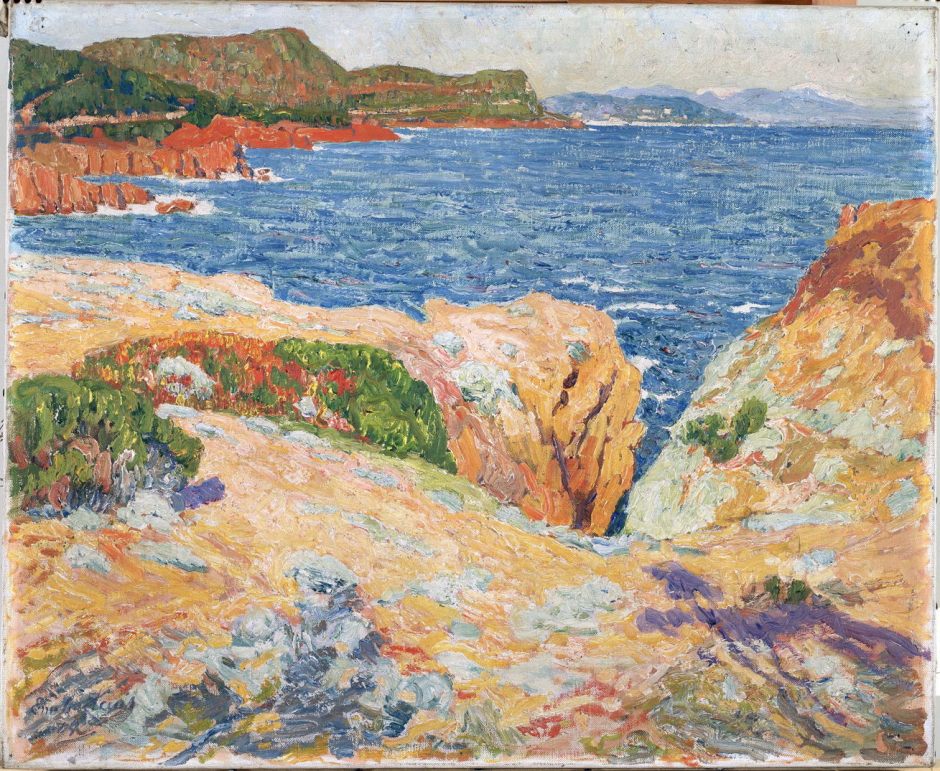
In 1914, immediately before the outbreak of war, he was back on the French Mediterranean coast, where he painted Noon in Estérel (Côte d’Azur).
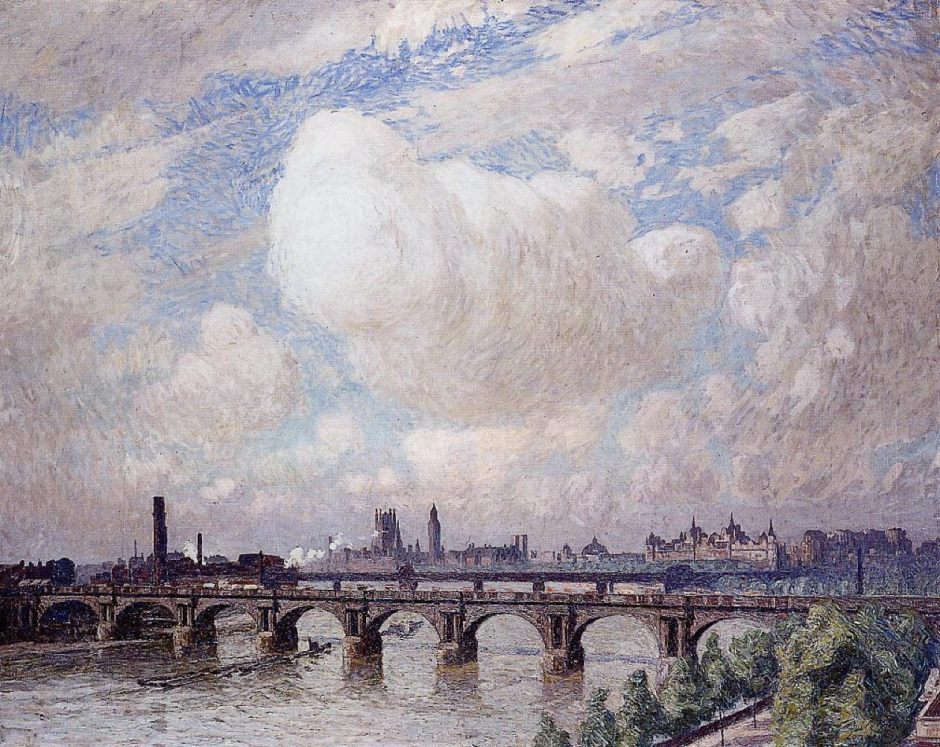
In 1916, when he was living in London, he painted this view of Waterloo Bridge in the Sun, with its rich textures.

Sunset over Waterloo Bridge, painted in the same year, has a markedly post-Impressionist style.

Morning Reflection on the Thames in London, from 1918, is a view over the Embankment and river that’s desaturated and made vaguer by fog.
Claus returned to Belgium the following year, where he found that art had moved on to Expressionism and Cubism. With rapidly declining interest in his paintings, he toured France, then died in obscurity at home in Astene, East Flanders, in 1924. His work was rapidly forgotten outside Belgium, and doesn’t seem to have been exhibited elsewhere since his death. It’s tragic how quickly a once-popular artist can fall by the wayside, and perhaps it’s now time to seek out some of his dazzling paintings in the collections of Belgium.
References
Lemonnier C (1908) Émile Claus, G van Oest, available from archive.org.
Ekonomidès C (2013) Émile Claus (1849-1924), Bibliothèque de l’Image. ISBN 978 2 8144 0032 0.

